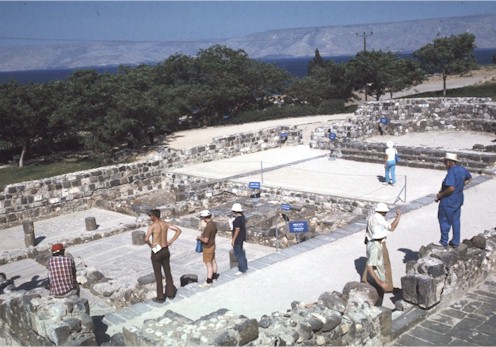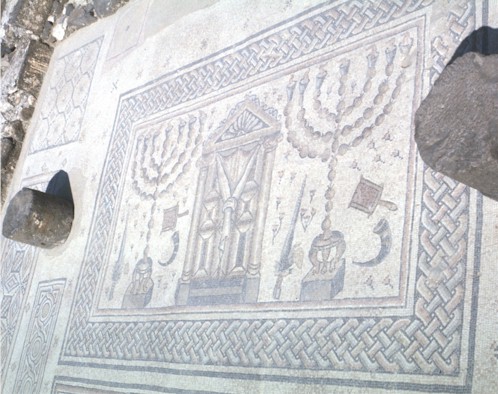

|
ruins of 4th c. synagogue at Tiberias with sea of Galilee & Golan heights in distance. |
![]()
New capitol of Galilee founded by Antipas (19 CE) near the hot springs of Hammath on the southwestern shore of lake Gennesareth. Its elevation (about 690 ft. below sea level) made it one of the lowest sizeable cities in the world. |

Mosaic in floor of 4th c. Tiberias synagogue built when rabbinic academy was based there
|
![]()
![]()
![]() Perspective
on the World of Jesus
Perspective
on the World of Jesus ![]()
Copyright © 1999-2023
by
Mahlon H. Smith
All rights reserved.
an American Theological Library Association Selected Religion Website
OCLC catalog no.: 62046512